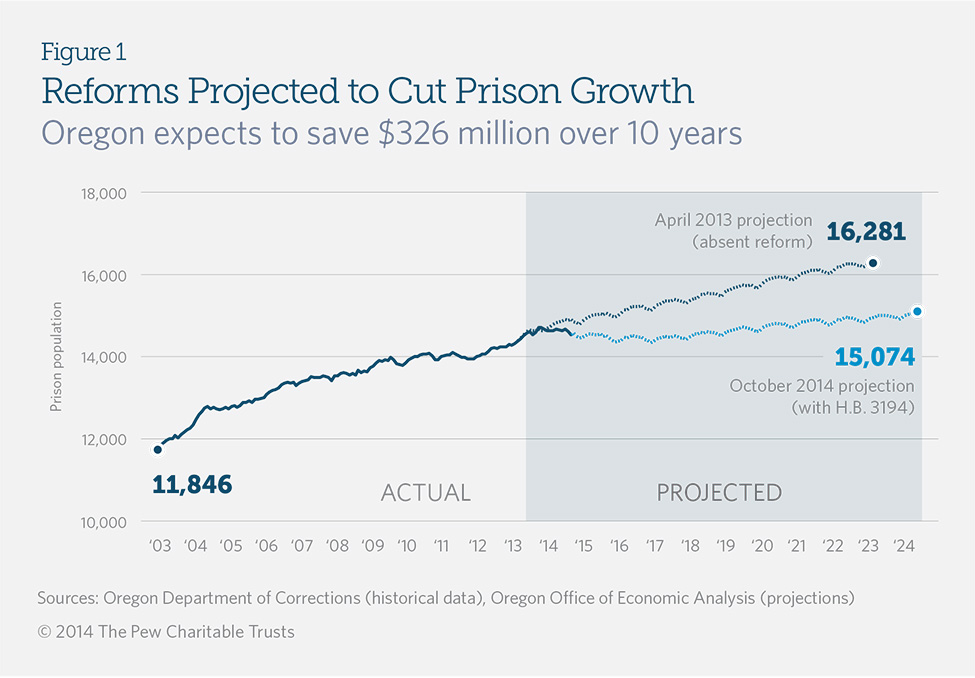Oregon's 2013 Public Safety Reforms One Year Later
Sweeping law controls prison growth, invests savings in local public safety efforts
Overview
Anticipating substantial growth in prison population and costs, Oregon lawmakers in 2013 enacted comprehensive sentencing and corrections reform legislation (House Bill 3194). Since then, the state has stabilized its prison population and redirected nearly $58 million in savings to front-line public safety programs shown to cut crime and reduce recidivism.
By expanding evidence-based sentencing options and investing in effective crime-prevention strategies, H.B. 3194 is projected to save the state $326 million in prison construction and operating costs over 10 years. The law prioritizes prison beds for serious and violent criminals; enhances evidence-based, cost-effective community supervision practices to reduce the likelihood of recidivism; establishes performance objectives for criminal justice agencies; and promotes responsible use of corrections dollars.
The law was produced by the Commission on Public Safety, a bipartisan, interbranch group charged by Governor John Kitzhaber (D) with conducting a comprehensive review of the state’s criminal justice system and developing policy recommendations. The Pew Charitable Trusts provided technical assistance to the commission and to state leaders.







